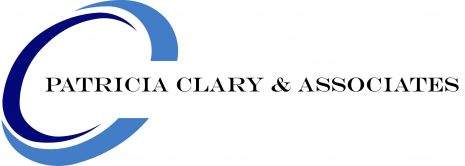Collaboration is a complex, multifaceted concept that encompasses a range of intricacies and nuances, posing challenges on various fronts and requiring adeptness in managing diverse perspectives and interests, especially when it intersects with mitigating factors influencing joint endeavor success.
Imagine a team of international researchers working on a groundbreaking project to develop renewable energy solutions. Researchers from different disciplines and cultural backgrounds bring their unique perspectives, methodologies, and expectations to the table, requiring a delicate balance to achieve productive outcomes.
The team must adeptly manage diverse perspectives and interests while fostering an environment of open communication and mutual respect. They must find common ground, align their goals, and integrate their expertise effectively. This requires active listening, effective conflict resolution, and bridging gaps in knowledge and understanding.
Moreover, collaboration in this renewable energy project becomes even more complex when it intersects with mitigating factors that influence its success. Factors such as limited funding, technological barriers, and policy frameworks can pose significant challenges. The team must navigate these external constraints, seek creative solutions, and build partnerships with industry stakeholders, policymakers, and local communities to overcome obstacles and maximize their impact.
Let us look at another example of the complexity of collaboration. Consider a collaborative effort to address the homeless population in a community. Each organization brings its own expertise, resources, and organizational culture, making it essential to navigate and align their approaches. Additionally, organizations must demonstrate adeptness in managing diverse perspectives and interests. They may have differing priorities, methodologies, and philosophies on addressing homelessness, however; successful collaboration requires building trust, establishing common goals, and leveraging each organization’s strengths while ensuring a holistic approach to the issue.
Moreover, collaboration in the context of social services can become even more complex when it intersects with mitigating factors that influence the success of joint endeavors. Factors such as limited funding, bureaucratic challenges, and the diverse needs of homeless individuals can pose significant hurdles. The collaborative effort must navigate these obstacles, seeking innovative funding sources, advocating for policy changes, and effectively coordinating services to provide comprehensive support for those experiencing homelessness.
Clear communication channels, regular meetings, and shared decision-making processes are crucial in this complex, multifaceted collaboration. Building relationships with community stakeholders, including government agencies, housing providers, and advocacy groups, is also vital to address the difficult challenges the homeless population faces.
Despite its importance, collaboration can be challenging and lead to miscommunication, lack of cooperation, and coordination among collaborative partners. Various barriers that prevent effective collaboration can stem from organizational, technical, cultural, or even personal factors like ego that have the potential to impact participation in a collaborative effort. Competition; fear; transparency; culture; limited resources; unrealistic goals, roles, and responsibilities; organizational culture; and leadership can also be barriers to collaboration. Briefly, let us look at each of these barriers.
Competition. Competition can lead to a mindset of scarcity where organizations see each other as threats rather than potential partners. Competition for funding, grants, donations, volunteer support, and other resources can create friction and discourage collaboration between organizations, leading to tension and mistrust. This mindset of competition can result in limited sharing of resources, ideas, and information, hindering the potential for collaboration and ultimately reducing the impact of the work of a nonprofit organization.
Fear. Nonprofit organizations may fear losing control over their programs, initiatives, or decision-making processes. The fear factor can be especially true when funders set an expectation that nonprofit organizations have collaborative networks and strategic partners in place before funding. When this occurs, the leadership in the organization can experience a loss of autonomy and direct input into the services provided and collaborative partners. The fear of loss can result in a lack of trust, preventing effective collaboration.
Transparency. Collaboration can require organizational transparency and sharing resources, ideas, operations, intentions, and information to work effectively. However, a lack of transparency can make it difficult for organizations to fully understand each other’s motivations, create confusion and misunderstandings, and pose a significant obstacle to collaboration, as not all organizations want to be transparent.
Limited Resources. Limited resources, including time, money, and personnel, can restrict the collaboration of nonprofit organizations. These constraints can make it difficult for organizations to collaborate as they may be unable to devote the resources necessary to prioritize collaboration. Time is always a challenge for nonprofit organizations in collaboration as planning meetings and collaborative activities require additional time, and limited staffing may be a factor whereby reducing the potential impact of their work.
Unclear Goals, Roles, and Responsibilities. A lack of clearly defined goals, role expectations, and responsibilities among collaborative partners can result in confusion and misalignment among organizations. Without clear goals, roles, and responsibilities, efforts may be duplicated, resources wasted, and the work not as effective as it could be with strategic objectives unmet, becoming a barrier to collaboration.
Culture. Different organizational cultures, values, and missions can challenge collaboration, making it difficult for organizations to work together effectively. How an organization approaches work can create conflict and tension among collaborative partners. For instance, one organization may prioritize a grassroots approach to solving a program, while another may take a more top-down approach.
Leadership. The leadership style of the convenor of the collaboration can be one of the greatest hindrances to collaboration as a convenor is essential for successful collaborative action. Some leadership styles, like autocratic, transactional, and laissez-faire, may be less collaborative, while others, like authentic, servant, and transformational, embrace more readily collaboration. It is worth noting that effective leaders often adopt a combination of different leadership styles, adapting their approach to suit different situations and the needs of their stakeholders.
In summary, competition; fear; transparency; culture; limited resources; unrealistic goals, roles, and responsibilities; organizational culture; and leadership can be barriers to collaboration. As stakeholders, we must learn how to turn these barriers around in the organizations where we lead, work, or volunteer.
Here is a simple exercise to better understand what collaboration might look like in your organization: Make three columns on a sheet of paper. In the first column, write barriers to collaboration; in the second column, write pros; and in the third column, write cons.
In the first column, list the barriers to collaboration identified in this article. As other words come to your mind, record them. Then, across from each word in the first column, write the pros and cons for each term in columns two and three.
If you are working with other organizational stakeholders, you might try this as a group exercise and compare your findings upon completing the activity.
Next, write three-to-five strategic objectives based on your answers that your organization might consider to become a better collaborative partner because community matters.
In Community,
Dr. Pat
Patricia A. Clary is a columnist who advocates for strategic community impact agendas to solve complex societal issues through collaboration, convening leadership, and governance. She can be reached at patriciaclary.com, LinkedIn https://www.linkedin.com/in/pat-clary/, or Facebook at PatriciaAClaryPhD. ©2023 All Rights Reserved.
Share This Story, Choose Your Platform!

Patricia A. Clary, Ph.D.
Columnist Community Matters / Collaboration / Convening Leadership / Governance / Systems-Thinking


